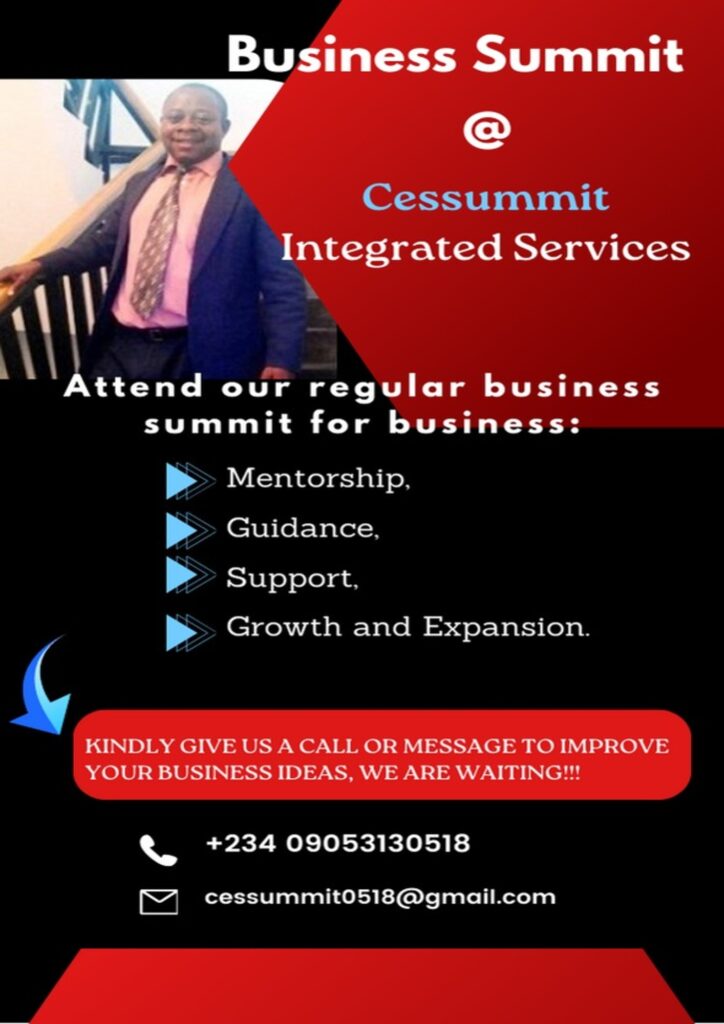
Unlocking the Power of Blockchain: A Guide for Entrepreneurs
Unlocking the Power of Blockchain: A Guide for Entrepreneurs – In today’s fast-paced and interconnected world, blockchain technology has emerged as a revolutionary force, empowering entrepreneurs to reshape industries and unlock unprecedented possibilities. Its decentralized and transparent nature has the potential to transform traditional business models, streamline processes, enhance security, and foster trust among participants. As an entrepreneur, understanding the power and potential of blockchain is crucial for staying ahead in the digital landscape. This comprehensive guide aims to demystify blockchain technology, explore its various applications across industries, and provide valuable insights and strategies for entrepreneurs looking to harness its trans-formative capabilities. Get ready to embark on a journey that will empower you to unlock the power of blockchain and pave the way for innovation and growth in your entrepreneurial endeavors.
Contents
- 1 The Post Focus:
- 2 Unlocking the Power of Blockchain: A Guide for Entrepreneurs:
- 2.1 Unlocking the Power of Blockchain: A Guide for Entrepreneurs
- 2.2 Unlocking the Power of Blockchain: A Guide for Entrepreneurs
- 2.3 Unlocking the Power of Blockchain: A Guide for Entrepreneurs
- 2.4 Unlocking the Power of Blockchain: A Guide for Entrepreneurs
- 2.5 Unlocking the Power of Blockchain: A Guide for Entrepreneurs
- 2.6 Unlocking the Power of Blockchain: A Guide for Entrepreneurs
- 2.7 Unlocking the Power of Blockchain: A Guide for Entrepreneurs
- 2.8 Unlocking the Power of Blockchain: A Guide for Entrepreneurs
- 3 Cessummit Professional Services:
The Post Focus:
What do I gain from reading Unlocking the Power of Blockchain: A Guide for Entrepreneurs?
By reading “Unlocking the Power of Blockchain: A Guide for Entrepreneurs,” you can gain several valuable benefits:
- In-depth Understanding: The guide provides a comprehensive overview of blockchain technology, explaining its underlying principles, architecture, and how it operates. It breaks down complex concepts into easily understandable terms, allowing you to grasp the fundamental concepts and mechanics of blockchain.
- Industry Applications: The guide explores the diverse range of industries where blockchain technology is making a significant impact. It highlights real-world use cases and success stories, demonstrating how entrepreneurs have leveraged blockchain to disrupt and transform sectors such as finance, supply chain management, healthcare, energy, and more. Understanding these applications can inspire you to identify innovative opportunities in your industry.
- Business Opportunities: The guide delves into the entrepreneurial potential of blockchain, outlining the opportunities it presents for startups and established businesses alike. It explores how blockchain can enable new business models, improve efficiency, reduce costs, and enhance customer experiences. By uncovering these opportunities, you can identify ways to leverage blockchain to gain a competitive edge and drive growth in your venture.
Unlocking the Power of Blockchain: A Guide for Entrepreneurs
- Strategic Implementation: Implementing blockchain technology requires careful planning and strategic decision-making. The guide offers insights and strategies for successfully integrating blockchain into your business processes. It covers considerations such as selecting the right blockchain platform, addressing scalability and security concerns, navigating regulatory landscapes, and forming strategic partnerships. This knowledge equips you with the tools to make informed decisions and effectively execute your blockchain initiatives.
- Overcoming Challenges: Blockchain implementation comes with its own set of challenges and considerations. The guide addresses common obstacles faced by entrepreneurs and guides mitigating risks, ensuring privacy and data protection, and fostering trust among participants. By understanding these challenges and their solutions, you can navigate potential pitfalls and maximize the benefits of blockchain technology.
- Future Outlook: Lastly, the guide explores the future of blockchain and its potential to shape industries further. It discusses emerging trends, such as interoperability, tokenization, and decentralized finance (DeFi), providing you with insights into the evolving landscape. By staying informed about the latest developments, you can position yourself as a forward-thinking entrepreneur and seize emerging opportunities as they arise.
Overall, “Unlocking the Power of Blockchain: A Guide for Entrepreneurs” empowers you with the knowledge, inspiration, and strategies necessary to leverage blockchain technology effectively in your entrepreneurial journey, enabling you to drive innovation, enhance competitiveness, and unlock new avenues of growth.

Unlocking the Power of Blockchain: A Guide for Entrepreneurs:
I. Introduction:
Definition of blockchain technology/ Importance of blockchain for entrepreneurs
Blockchain technology is a decentralized and distributed ledger system that allows multiple parties to maintain a shared record of transactions securely and transparently. It enables the creation of a digital chain of blocks, where each block contains a set of transactions. Once a block is added to the chain, it becomes nearly impossible to alter or delete the information stored within it, making blockchain highly secure and tamper-resistant.
For entrepreneurs, blockchain technology holds significant importance as it offers various opportunities and advantages. Here are a few key reasons why entrepreneurs should pay attention to blockchain:
- Enhanced Security: Blockchain provides a high level of security through its cryptographic algorithms and decentralized nature. This makes it difficult for malicious actors to tamper with data, ensuring the integrity and authenticity of transactions.
- Transparency and Trust: The transparent nature of blockchain allows all participants in the network to have access to the same information, reducing the need for intermediaries and fostering trust among parties. This can be particularly beneficial for entrepreneurs seeking to establish trust with customers, investors, or partners.
- Improved Efficiency and Cost Savings: By eliminating the need for intermediaries and streamlining processes, blockchain can help entrepreneurs improve operational efficiency and reduce costs. It enables faster and more automated transaction settlements, removing the need for manual reconciliation and paperwork.
Unlocking the Power of Blockchain: A Guide for Entrepreneurs
- Smart Contracts and Automation: Blockchain can facilitate the use of smart contracts, which are self-executing agreements with predefined conditions. Smart contracts automate various business processes, such as payments, supply chain management, or intellectual property rights, enabling entrepreneurs to reduce human error, enhance speed, and save costs.
- Access to Funding: Blockchain technology has paved the way for innovative fundraising methods, such as Initial Coin Offerings (ICOs) and Security Token Offerings (STOs). These mechanisms allow entrepreneurs to raise capital directly from investors globally, bypassing traditional funding channels.
- Disruption of Industries: Blockchain has the potential to disrupt various industries, including finance, supply chain, healthcare, and more. Entrepreneurs who embrace blockchain can position themselves as pioneers in their respective industries and gain a competitive advantage.
Unlocking the Power of Blockchain: A Guide for Entrepreneurs
II. Understanding Blockchain Technology:
- Core Principles and Components of Blockchain: a. Decentralization: Blockchain operates through a decentralized network of computers (nodes) that collectively maintain and validate the ledger. No single entity has complete control over the system. b. Distributed Ledger: The ledger consists of a chain of blocks, each containing a list of transactions. It is distributed and replicated across multiple nodes, ensuring redundancy and resilience. c. Consensus Mechanism: Blockchain employs a consensus mechanism to agree on the validity of transactions and ensure consistency across the network. Examples include Proof of Work (PoW), Proof of Stake (PoS), and Practical Byzantine Fault Tolerance (PBFT). d. Cryptography: Blockchain relies on cryptographic algorithms to secure the data stored in blocks. It ensures the privacy, integrity, and authenticity of transactions.
- Different Types of Blockchains: a. Public Blockchains: Public blockchains are open to anyone and allow anyone to join the network, participate in the consensus process, and access and verify transactions. Examples include Bitcoin and Ethereum. b. Private Blockchains: Private blockchains are restricted to a specific group or organization. Participants are usually known and have permission to access the network. Private blockchains offer higher privacy and control but sacrifice some decentralization. c. Consortium Blockchains: Consortium blockchains are semi-decentralized, involving a group of organizations that jointly operate and govern the network. Consortium blockchains strike a balance between the openness of public blockchains and the privacy and control of private blockchains. They are often used in industries where multiple entities collaborate, such as supply chain management or healthcare.
- Key Features and Benefits of Blockchain Technology:
a. Immutability: Once data is recorded on the blockchain, it is extremely difficult to alter or tamper with. This immutability feature ensures data integrity and builds trust among participants.
b. Transparency: Blockchain provides transparency by allowing all participants to view and verify transactions. This transparency reduces the need for intermediaries, as the shared information can be trusted by all parties.
c. Security: Blockchain employs cryptographic algorithms to secure transactions and data. The decentralized nature of the network and consensus mechanisms make it resistant to hacking and fraud.
d. Efficiency: Blockchain eliminates the need for intermediaries and manual reconciliation, streamlining processes and reducing costs. It enables faster settlement times, automated workflows, and improved operational efficiency.
Unlocking the Power of Blockchain: A Guide for Entrepreneurs
e. Traceability: Transactions recorded on the blockchain are timestamped and linked in a chain, creating a transparent audit trail. This traceability is valuable in industries like supply chain management, where tracking and verifying the origin and movement of goods is crucial.
f. Smart Contracts: Blockchain supports the implementation of smart contracts, which are self-executing agreements with predefined conditions. Smart contracts automate processes, reduce reliance on intermediaries, and ensure the reliable execution of agreements.
g. Global Accessibility: Blockchain technology operates on a global scale, allowing entrepreneurs to transact and collaborate with partners and customers worldwide without the need for intermediaries or complex cross-border processes.
In conclusion, blockchain technology offers entrepreneurs a range of advantages, including enhanced security, transparency, efficiency, and access to new funding mechanisms. By understanding the core principles, components, and different types of blockchains, entrepreneurs can leverage blockchain to transform their businesses and gain a competitive edge in their industries.
Unlocking the Power of Blockchain: A Guide for Entrepreneurs
III. Real-World Applications of Blockchain:
- Supply Chain Management and Logistics: Blockchain technology can revolutionize supply chain management by providing transparency, traceability, and accountability. It enables tracking the movement of goods, verifying their origin, ensuring ethical sourcing, and preventing counterfeit products. Companies can use blockchain to streamline logistics, automate documentation, and improve overall supply chain efficiency.
- Financial Services and Banking: Blockchain has significant implications for the financial industry, offering faster and more secure transactions, reducing fraud, and eliminating intermediaries. It enables peer-to-peer transactions, cross-border payments, and remittances with reduced costs and settlement times. Blockchain-based cryptocurrencies and stablecoins provide alternatives to traditional currencies and enable financial inclusion for the unbanked population.
- Healthcare and Medical Records: Blockchain can transform healthcare by securely storing and sharing patient medical records. It ensures the integrity and privacy of sensitive data while enabling authorized healthcare providers to access patient information seamlessly. Blockchain also facilitates clinical trials, medical research, and drug supply chain management, reducing counterfeit drugs and improving patient safety.
Unlocking the Power of Blockchain: A Guide for Entrepreneurs
- Intellectual Property and Copyright Protection: Blockchain technology can create a decentralized and immutable ledger for recording intellectual property (IP) rights, copyrights, and ownership information. By timestamping and verifying ownership, blockchain offers a secure and transparent way to protect creators’ rights and prevent plagiarism or unauthorized use of digital assets.
- Voting Systems and Democracy: Blockchain can enhance the integrity and transparency of voting systems. It enables secure and verifiable digital voting, eliminating voter fraud and ensuring accurate tallies. Blockchain-based voting systems can increase trust in elections, enhance voter participation, and strengthen democratic processes.
- Other Potential Use Cases:
- Other Potential Use Cases:
a. Supply Chain Financing: Blockchain can facilitate supply chain financing by providing a transparent and trusted platform for lenders and suppliers to collaborate. It enables the digitization of trade documents, automates the verification process, and reduces the risk of fraud, allowing suppliers to access financing more efficiently.
b. Real Estate: Blockchain has the potential to transform the real estate industry by streamlining property transactions, eliminating the need for intermediaries, and reducing fraud. It can enable efficient title transfers, automate property management processes, and create fractional ownership opportunities through tokenization.
Unlocking the Power of Blockchain: A Guide for Entrepreneurs
c. Energy Management: Blockchain can optimize energy management by enabling peer-to-peer energy trading, tracking renewable energy generation and consumption, and facilitating decentralized grid management. It promotes energy efficiency, reduces reliance on centralized energy providers, and empowers consumers to participate in the energy market.
d. Identity Management: Blockchain-based identity management systems can provide individuals with control over their data and streamline identity verification processes. It allows for the secure and efficient sharing of identity information, reducing the risk of identity theft and improving user privacy.
e. Insurance: Blockchain can enhance the insurance industry by enabling transparent and automated claims processing, reducing fraud, and improving underwriting processes. Smart contracts can automate claim settlements based on predefined conditions, enhancing efficiency and trust between insurers and policyholders.
f. Charity and Aid: Blockchain can improve transparency and accountability in the charity and aid sector by tracking donations, ensuring funds are used as intended, and reducing administrative costs. Donors can have visibility into the impact of their contributions, fostering trust and encouraging more donations.
Unlocking the Power of Blockchain: A Guide for Entrepreneurs
g. Gaming and Virtual Assets: Blockchain technology can enable secure ownership and trading of in-game assets and virtual goods. It provides players with true ownership and the ability to transfer assets between different games or platforms, fostering a thriving digital economy.
It’s important to note that while blockchain has immense potential, its implementation and adoption may face challenges related to scalability, regulatory frameworks, interoperability, and user acceptance. However, ongoing research, development, and real-world use cases continue to explore and unlock the full potential of blockchain technology.
Unlocking the Power of Blockchain: A Guide for Entrepreneurs
IV. Overcoming Challenges and Limitations:
A. Scalability Issues:
- Layer 2 Solutions: Implementing layer 2 scaling solutions, such as payment channels (e.g., Lightning Network for Bitcoin) or sidechains, can help increase transaction throughput and alleviate congestion on the main blockchain.
- Sharding: Sharding involves dividing the blockchain network into smaller partitions called shards, each capable of processing its transactions. This can significantly improve scalability by parallelizing transaction processing.
- Consensus Algorithm Optimization: Exploring alternative consensus algorithms, like Proof of Stake (PoS) or Proof of Authority (PoA), which require less computational power than Proof of Work (PoW), can increase scalability while maintaining security.
Unlocking the Power of Blockchain: A Guide for Entrepreneurs
B. Privacy and Security Concerns:
- Enhanced Encryption Techniques: Implementing advanced cryptographic techniques, such as zero-knowledge proofs or homomorphic encryption, can protect sensitive data while still allowing for necessary transparency and verification.
- Privacy-Enhancing Technologies: Integrating privacy-focused solutions, like confidential transactions or ring signatures, can provide privacy features without compromising the underlying transparency and security of the blockchain.
- Identity Management Solutions: Developing robust identity management systems that ensure user privacy while maintaining traceability and accountability can address privacy concerns.
C. Regulatory and Legal Considerations:
- Collaboration with Regulatory Bodies: Engaging in dialogue with regulatory authorities to educate them about the benefits and potential of blockchain technology can lead to the development of favorable regulatory frameworks that balance innovation and compliance.
- Compliance Solutions: Implementing blockchain solutions that adhere to existing regulatory requirements, such as Know Your Customer (KYC) and Anti-Money Laundering (AML) regulations, can help address legal considerations and increase acceptance by regulators.
- Global Standardization Efforts: Collaborating with industry organizations and stakeholders to establish global standards and best practices can create a more consistent and harmonized regulatory environment for blockchain technology.
Unlocking the Power of Blockchain: A Guide for Entrepreneurs
D. Interoperability and Standardization:
- Interoperability Protocols: Developing interoperability protocols that enable seamless communication and data exchange between different blockchain networks can overcome the challenge of siloed blockchains.
- Cross-Chain Bridges: Implementing cross-chain bridges or interoperability layers that facilitate the transfer of assets and data between different blockchains can enhance interoperability and facilitate decentralized applications (dApps) across multiple networks.
- Industry-wide Collaboration: Encouraging collaboration among blockchain projects, industry consortia, and standard-setting bodies to establish common protocols and standards can drive interoperability and ensure compatibility between different blockchain implementations.
It is important to note that addressing these challenges requires ongoing research, development, and collaboration among various stakeholders, including entrepreneurs, developers, regulators, and industry participants. By collectively overcoming these limitations, blockchain technology can reach its full potential and unlock widespread adoption in various sectors.

Unlocking the Power of Blockchain: A Guide for Entrepreneurs
V. Building a Blockchain-Based Business:
A. Identifying Potential Opportunities:
- Evaluate Industries: Identify industries or sectors where blockchain technology can bring significant value, such as supply chain, finance, healthcare, or decentralized applications.
- Pain Points and Inefficiencies: Identify pain points, inefficiencies, or challenges within the identified industries that can be addressed by blockchain technology. Look for areas where transparency, security, trust, or automation can make a notable impact.
B. Conducting Market Research:
- Competitive Landscape: Analyze the existing solutions and competitors in the market. Identify their strengths, weaknesses, and unique selling propositions.
- Customer Needs: Understand the specific needs and preferences of your target customers within the identified industry. Conduct surveys, interviews, or market research to gain insights into their pain points, expectations, and willingness to adopt blockchain solutions.
C. Designing a Blockchain Solution:
- Define Objectives: Clearly define the objectives and goals of your blockchain-based business solution. Determine the specific problems it aims to solve, the value proposition it offers, and the benefits it brings to customers.
- Technology Selection: Select the appropriate blockchain platform or technology that aligns with your business requirements. Consider factors like scalability, consensus mechanism, development tools, and community support.
- System Architecture: Design the overall system architecture, including the components, data structures, consensus mechanisms, and integration with existing systems or databases. Determine whether a public, private, or hybrid blockchain is suitable for your solution.
Unlocking the Power of Blockchain: A Guide for Entrepreneurs
D. Development and Implementation Considerations:
- Development Team: Assemble a skilled and experienced team of blockchain developers, architects, and experts who can design and implement the blockchain solution effectively. Consider collaborating with external partners or blockchain development firms if necessary.
- Prototyping and Testing: Develop a prototype or Minimum Viable Product (MVP) to validate the feasibility and functionality of your blockchain solution. Conduct thorough testing and iterations to refine the system before launching it in the market.
- Scalability and Performance: Address scalability and performance considerations during the development process. Explore potential solutions like sharding, off-chain processing, or layer 2 solutions to ensure that your blockchain system can handle increased transaction volumes and user demands.
E. Funding and Investment Strategies:
- Bootstrapping: Consider self-funding the initial development and operations of your blockchain-based business. This may involve personal savings, contributions from co-founders, or revenue generated from other sources.
- Traditional Funding Sources: Explore traditional funding options like venture capital, angel investors, or loans from financial institutions. Prepare a comprehensive business plan, pitch deck, and financial projections to attract potential investors.
- Tokenization and Crowdfunding: Explore tokenization models like Initial Coin Offerings (ICOs), Security Token Offerings (STOs), or crowdfunding platforms to raise capital directly from the community or targeted investors. Ensure compliance with relevant regulations and engage legal counsel if needed.
- Grants and Government Programs: Research grants, subsidies, or government programs that support blockchain innovation and entrepreneurship. These initiatives can provide financial support, mentorship, or resources for your blockchain-based business.
Remember, building a successful blockchain-based business requires a combination of technical expertise, market understanding, and strategic decision-making. Continuously iterate, adapt to market dynamics, and stay updated with the latest advancements in blockchain technology to ensure the long-term success of your venture.
Unlocking the Power of Blockchain: A Guide for Entrepreneurs
VI. Blockchain Adoption and Integration:
A. Strategies for Adoption within Existing Businesses:
- Identify Use Cases: Identify specific use cases within your existing business where blockchain technology can bring value. Start with small-scale pilot projects to demonstrate the benefits and build confidence in the technology.
- Gradual Integration: Consider a phased approach to integration by gradually incorporating blockchain solutions into existing processes and systems. This minimizes disruption and allows for iterative learning and improvement.
- Proof of Concept: Develop a proof of concept or prototype to showcase the benefits and feasibility of blockchain technology. Use real-world data and scenarios to demonstrate the value proposition to stakeholders within your organization.
- Return on Investment (ROI) Analysis: Conduct a thorough cost-benefit analysis to highlight the potential ROI of adopting blockchain technology. Emphasize the long-term benefits, such as increased efficiency, reduced costs, improved security, or new business opportunities.
B. Collaborations and Partnerships in the Blockchain Ecosystem:
- Industry Consortia: Join or establish industry consortia and partnerships focused on blockchain technology. Collaborate with other organizations to share knowledge, resources, and best practices, and collectively drive blockchain adoption in the industry.
- Technology Providers: Collaborate with blockchain technology providers or development firms to leverage their expertise, gain access to specialized tools, and accelerate the development and integration of blockchain solutions.
- Strategic Partnerships: Seek partnerships with companies or organizations that complement your business and can benefit from blockchain technology. Collaborate on joint projects or explore shared use cases to maximize the impact and reach of your blockchain initiatives.
Unlocking the Power of Blockchain: A Guide for Entrepreneurs
C. Training and Educating Employees about Blockchain:
- Internal Training Programs: Develop internal training programs to educate employees about blockchain technology, its potential applications, and the benefits it offers. Provide workshops, seminars, or online courses to enhance their understanding and foster a blockchain-literate workforce.
- External Resources: Encourage employees to explore external resources, such as online courses, webinars, or industry conferences, to deepen their knowledge and stay updated with the latest advancements in blockchain technology.
- Internal Champions: Identify and empower internal blockchain champions who can drive awareness, educate their peers, and spearhead blockchain adoption initiatives within different departments or business units.
Unlocking the Power of Blockchain: A Guide for Entrepreneurs
D. Overcoming Resistance to Change:
- Communication and Transparency: Communicate the rationale behind adopting blockchain technology, its benefits, and how it aligns with the organization’s goals. Address any concerns or misconceptions and ensure transparency throughout the adoption process.
- Pilot Projects and Proof of Value: Conduct pilot projects to demonstrate tangible value and address skepticism or resistance. Highlight the positive outcomes, lessons learned, and potential scalability for broader adoption.
- Incentives and Rewards: Provide incentives or recognition programs to motivate employees to embrace and actively contribute to the adoption of blockchain technology. Encourage collaboration, innovation, and knowledge sharing within the organization.
- Change Management: Implement a well-defined change management strategy that includes stakeholder engagement, training, and ongoing support. Address concerns, provide support resources, and involve key stakeholders in decision-making to foster a sense of ownership and commitment.
By implementing these strategies, organizations can overcome resistance to change, foster a culture of blockchain adoption, and successfully integrate blockchain technology into their existing business operations, gaining a competitive edge and reaping the benefits of this trans-formative technology.
Unlocking the Power of Blockchain: A Guide for Entrepreneurs
VII. Future Trends and Innovations:
A. Tokenization and Asset Digitization:
- Tokenized Securities: The tokenization of traditional financial assets, such as stocks, bonds, and real estate, will continue to gain momentum. Blockchain-based tokenized securities offer increased liquidity, fractional ownership, and simplified transferability.
- Digital Currencies: Central bank digital currencies (CBDCs) and stablecoins are expected to become more prevalent, providing the benefits of blockchain technology while maintaining stability and regulatory compliance.
B. Decentralized Finance (DeFi) and Smart Contracts:
- DeFi Expansion: Decentralized finance will continue to grow, providing financial services like lending, borrowing, and trading without intermediaries. DeFi platforms leverage smart contracts to automate and enforce agreements, offering transparency and accessibility.
- Automated Market Making: Automated market makers (AMMs) based on smart contracts will gain further popularity, allowing users to trade digital assets directly with liquidity pools, enhancing efficiency and liquidity in the decentralized ecosystem.
C. Integration of Blockchain with Emerging Technologies (AI, IoT):
- AI and Blockchain Integration: The combination of artificial intelligence (AI) and blockchain technology will enable innovative applications. AI algorithms can be utilized to analyze blockchain data, improve consensus mechanisms, and enhance security.
- IoT and Blockchain Integration: The integration of the Internet of Things (IoT) and blockchain will enable secure and decentralized management of IoT devices, facilitating data integrity, device authentication, and automated transactions.
Unlocking the Power of Blockchain: A Guide for Entrepreneurs
D. Regulation and Mainstream Acceptance:
- Regulatory Frameworks: Governments and regulatory bodies will continue to develop frameworks to address legal, security, and privacy concerns surrounding blockchain technology. Clear regulations will help foster trust and mainstream adoption.
- Enterprise Adoption: Large enterprises and corporations will increasingly embrace blockchain technology for various use cases, such as supply chain management, data privacy, and transactional transparency. This will contribute to wider acceptance and integration into existing business systems.
- User Experience and User-Friendly Interfaces: Efforts will be made to enhance the user experience and simplify blockchain interactions, making them more accessible to non-technical users. User-friendly interfaces and intuitive applications will drive adoption and engagement.
It’s important to note that these future trends and innovations are based on current developments and predictions, and the actual trajectory of blockchain technology may vary. However, blockchain will continue to evolve and disrupt various industries, offering new opportunities for entrepreneurs and driving transformative changes in the global economy.
Unlocking the Power of Blockchain: A Guide for Entrepreneurs
VIII. Conclusion:
A. Recap of Key Takeaways:
- Blockchain technology is a distributed ledger system that offers transparency, security, and immutability.
- Understanding the core principles and components of blockchain is crucial for entrepreneurs looking to leverage its potential.
- Blockchain can be implemented in various forms, such as public, private, or consortium blockchains.
- The technology offers key features and benefits like decentralization, trust, efficiency, and cost reduction.
- Real-world applications of blockchain span industries like supply chain management, finance, healthcare, intellectual property, voting systems, and more.
- Overcoming challenges such as scalability, privacy, regulations, and interoperability is crucial for widespread blockchain adoption.
- Building a successful blockchain-based business involves identifying opportunities, conducting market research, designing solutions, addressing development considerations, and exploring funding strategies.
- Adoption strategies, collaborations, employee training, and overcoming resistance to change are important factors for integrating blockchain within existing businesses.
- The future of blockchain holds trends like tokenization, DeFi, integration with emerging technologies, and increasing regulation and mainstream acceptance.
Unlocking the Power of Blockchain: A Guide for Entrepreneurs
B. Encouragement for Entrepreneurs to Explore Blockchain Opportunities: As an entrepreneur, embracing blockchain technology can open up a world of opportunities. Blockchain has the potential to disrupt industries, create new business models, and unlock efficiencies. By staying informed, researching market needs, and understanding the benefits of blockchain, entrepreneurs can position themselves as innovators in their respective fields.
C. Final Thoughts on the Future of Blockchain for Entrepreneurs: The future of blockchain for entrepreneurs is promising. As technology evolves and matures, entrepreneurs will continue to find new ways to leverage blockchain for innovation, efficiency, and value creation. Collaboration, education, and adaptation to changing market dynamics will be key to success. By keeping an eye on emerging trends, embracing continuous learning, and staying agile, entrepreneurs can position themselves at the forefront of the blockchain revolution and drive meaningful change in their industries.
Remember, blockchain technology is still evolving, and its full potential is yet to be realized. As an entrepreneur, seize the opportunity to explore and embrace blockchain, as it has the potential to transform the way we conduct business and reshape industries across the globe.
Unlocking the Power of Blockchain: A Guide for Entrepreneurs
Cessummit Professional Services:
Cessummit Professional Services offers a comprehensive range of solutions to meet the diverse needs of businesses. Our expertise extends across various areas to provide valuable assistance in managing and growing your enterprise. Here are some key components of our service offerings:
- Business Plan Writing: We understand the importance of a well-crafted business plan in securing funding, attracting investors, and guiding your company’s growth. Our experienced team of professionals can work closely with you to develop a tailored business plan that outlines your objectives, strategies, financial projections, and more. With our expertise, you can present a compelling and comprehensive business plan that sets you on the path to success.
- Business Incorporation at CAC: Navigating the process of business incorporation can be complex and time-consuming. Our team is well-versed in the legal and regulatory requirements of the Corporate Affairs Commission (CAC) and can guide you through the entire process. From company name registration to filing the necessary documentation, we ensure a smooth and efficient incorporation process, enabling you to establish your business entity with confidence.
- Tax Management Services: Compliance with tax regulations is crucial for every business, but it can also be a challenging task. Our tax management services are designed to help you effectively manage your tax obligations while maximizing your tax benefits. Our professionals possess in-depth knowledge of tax laws and regulations and can assist you with tax planning, preparation, filing, and compliance. We stay up to date with the latest tax developments, enabling us to provide accurate and timely advice tailored to your specific circumstances.
- Financial Analysis and Planning: To make informed business decisions, it is essential to have a clear understanding of your company’s financial performance. Our financial analysis and planning services help you gain insights into key financial metrics, identify areas of improvement, and develop strategies for growth. Whether you need assistance with financial forecasting, budgeting, cost analysis, or cash flow management, our team can provide the expertise you need to optimize your financial operations.
- Management Consulting: As experienced management consultants, we offer valuable insights and guidance to help you address various challenges and achieve your business goals. We can assist you in areas such as organizational development, strategic planning, process improvement, performance management, and more. Our collaborative approach allows us to understand your unique needs and devise customized solutions that drive operational efficiency and sustainable growth.
At Cessummit Professional Services, we are dedicated to delivering exceptional support to businesses across different industries. By leveraging our expertise in business planning, incorporation, tax management, financial analysis, and management consulting, we empower you to overcome obstacles, capitalize on opportunities, and thrive in a competitive landscape.

Unlocking the Power of Blockchain: A Guide for Entrepreneurs
Read More here:
- How Digital Currencies Impact Business Regulations in Nigeria
- Authentic Sample Business Proposal for Cement Supply Business
- How to Write Winning Proposals that Close Deals
- Learn how to write your Business Profile
- How to Raise Funds for Your Project by Crowdfunding
- Tips for Managing Multiple Class Assignments as a Student
- Secrets of Growth Hacking: Tips and Tricks from Successful Entrepreneurs
- Cessummit.com Services Offerings: What we do & How
- Profitable Business Idea
Summing Up: Unlocking the Power of Blockchain: A Guide for Entrepreneurs
In conclusion, on Unlocking the Power of Blockchain: A Guide for Entrepreneurs: blockchain technology holds immense potential for entrepreneurs. Its ability to provide transparency, security, and efficiency can revolutionize various industries and create new business opportunities. By understanding the core principles, exploring real-world applications, and overcoming challenges, entrepreneurs can harness the power of blockchain to drive innovation and gain a competitive edge. As technology continues to evolve and gain mainstream acceptance, entrepreneurs must stay informed, adapt to emerging trends, and embrace the possibilities that blockchain offers. The future of blockchain is bright, and by embracing it, entrepreneurs can shape a more decentralized, transparent, and inclusive economy.






